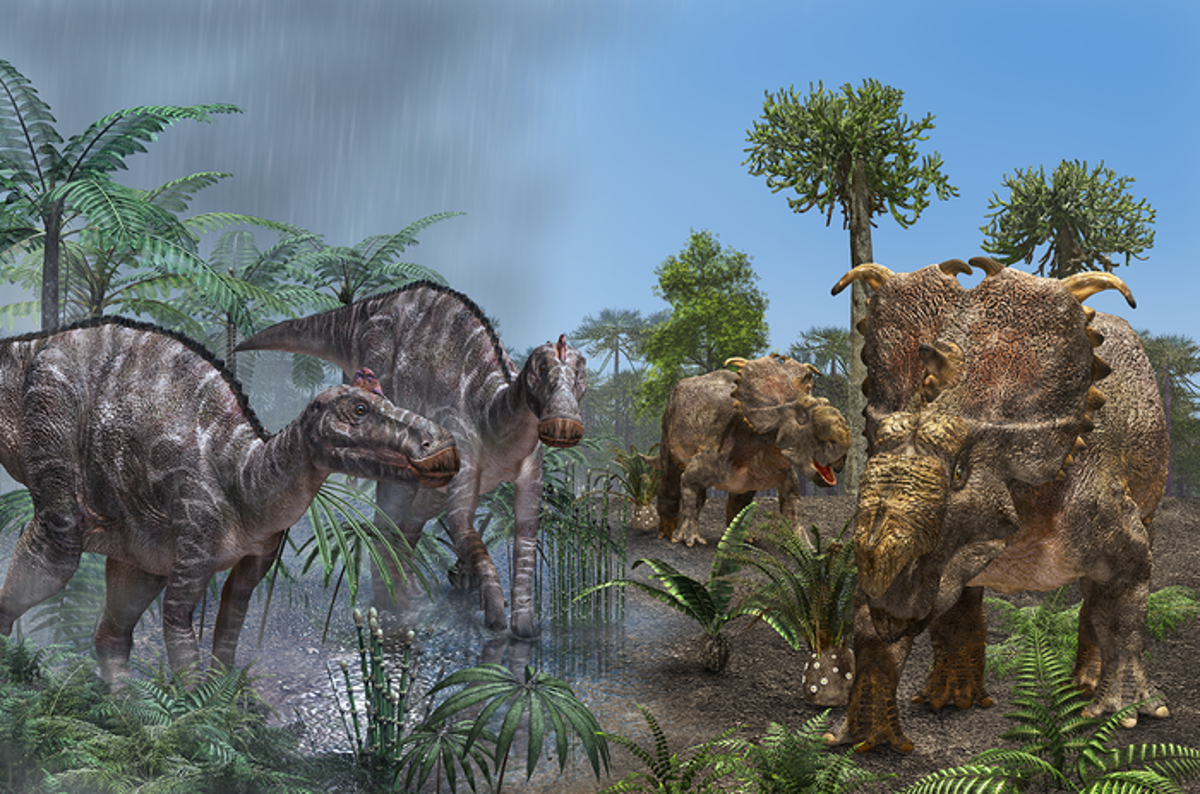
Scientists have found there were “surprising differences” in the way herbivorous dinosaurs consumed a diet of plants, an advance that reveals more on how feeding evolved in the prehistoric reptiles.
Researchers from the University of Bristol in the UK used CT scans of dinosaur skulls to track the evolution of early plant-eating dinosaurs reconstructing jaw muscles and measuring the animals’ bite force.
While previous studies have shown how different dinosaurs consumed their food, relatively little is known about how they evolved their preferred eating styles.
In the new study, published on Tuesday in the journal Current Biology, they analysed five skulls of dinosaurs from the plant-eating group Ornithischia, including Heterodontosaurus, Lesothosaurus, Scelidosaurus, Hypsilophodon and Psittacosaurus – the earliest representatives of what would become the major herbivore dinosaur groups.
Although most early dinosaurs were vegetarian, researchers found these five “veggie” animals had evolved very different ways and a range of adaptations to eat plants.
“When we compared the functional performance of the skull and teeth of these plant-eating dinosaurs, we found significant differences in the relative sizes of the jaw muscles, bite forces and jaw strength between them,” study lead author David Button said in a statement.
“This showed that these dinosaurs, although looking somewhat similar, had evolved very different ways to tackle a diet of plants,” Dr Button explained.
Heterodontosaurus, for instance, likely had large jaw muscles relative to its skull size capable of producing a high bite force that could have helped it consume tough vegetation.
Scelidosaurus, scientists said, had a similar bite force but relatively smaller jaw muscles compared to its skull.
In contrast, the skull of the Hypsilophodon did not have big muscles but instead, the dinosaur reoriented its muscles to bite more efficiently with less muscle force.
“We discovered that each dinosaur tackled the problems posed by a plant-based diet by adopting very different eating techniques,” said study co-author Stephan Lautenschlager from the University of Birmingham in the UK.
“Some compensated for low eating performance through their sheer size, whilst others developed bigger jaw muscles, increased jaw system efficiency, or combined these approaches. Although these animals looked very similar, their individual solutions to the same problems illustrates the unpredictable nature of evolution,” Dr Lautenschlager explained.
To understand the morphology of the skulls better, researchers reconstructed the jaw muscles using data from birds and crocodiles to help indicate where the muscles would have been.
They then modelled the skull into thousands of individual parts and, based on the size and arrangement of these elements, estimated the bite force that these muscles can generate.
Researchers simulated each skull to bite an imaginary object to see how different elements responded to the force.
The findings revealed that while all of the five dinosaurs were plant eaters, they each had different ways of doing it.
“If you want to understand how dinosaurs diversified into so many different types so effectively, it’s critical to learn how they evolved to feed on a such a wide variety of vegetation in so many ways. This diversity in feeding mechanisms set them up to dominate life on land for millions of years to come,” study senior author Paul Barrett said.
“This research helps us understand how animals evolve to occupy new ecological niches. It shows that even similar animals adopting similar diets won’t always evolve the same characteristics. This highlights how innovative and unpredictable evolution can be,” Dr Button added.







